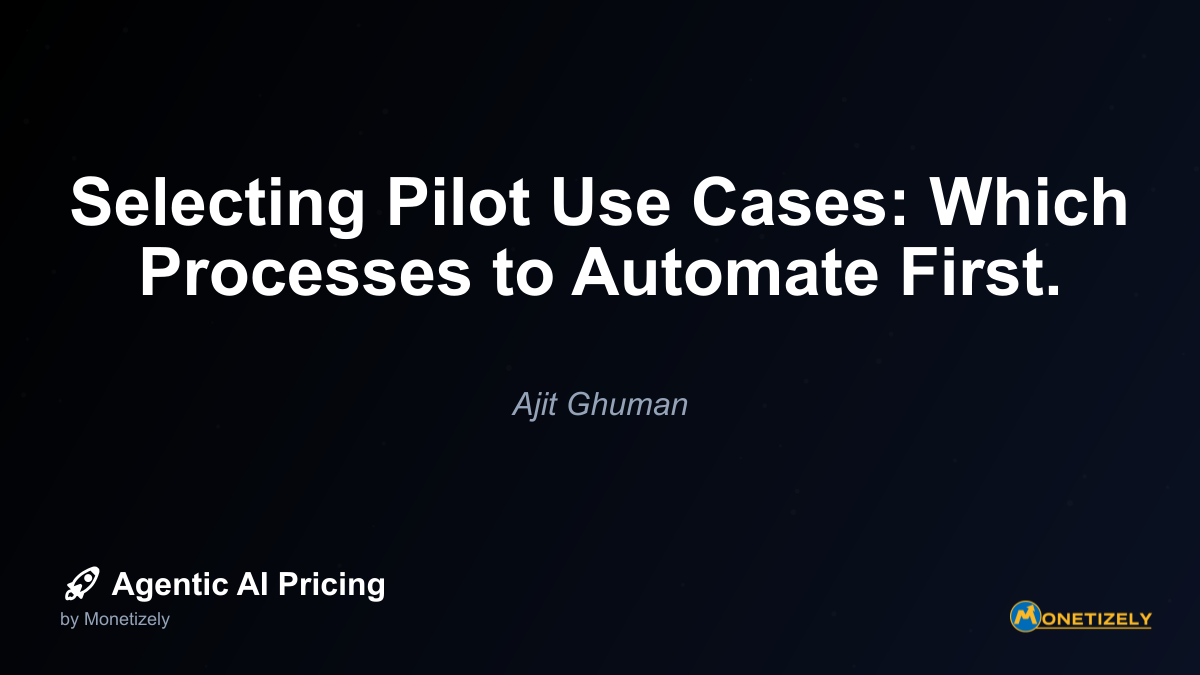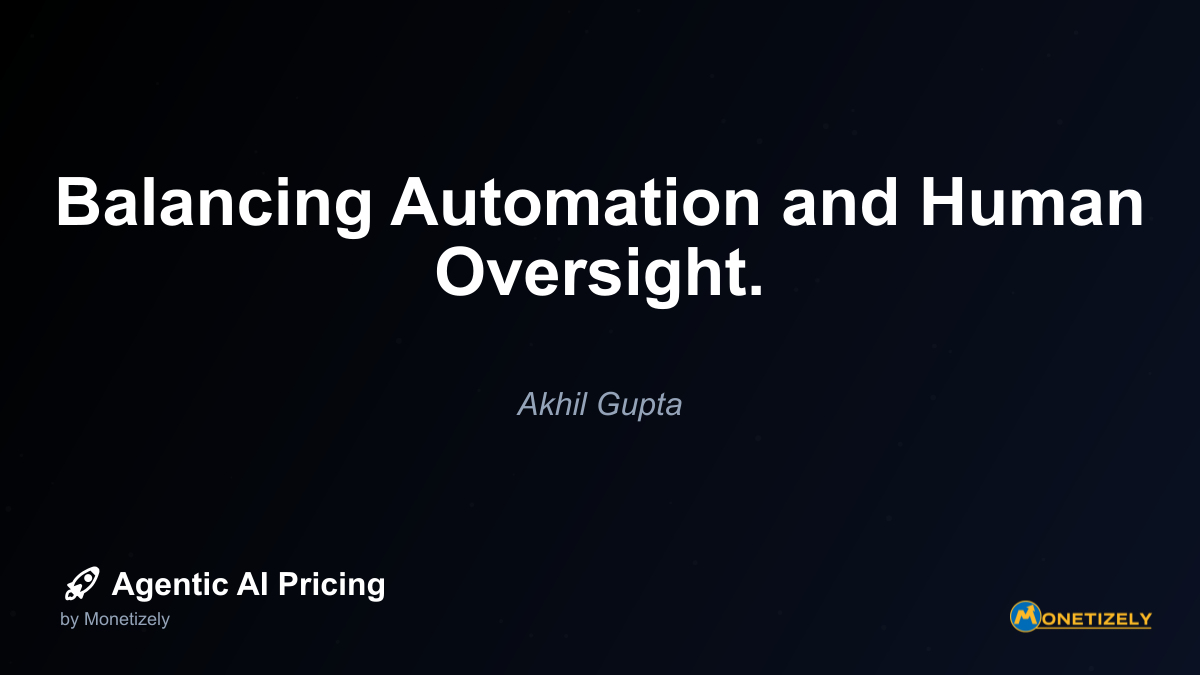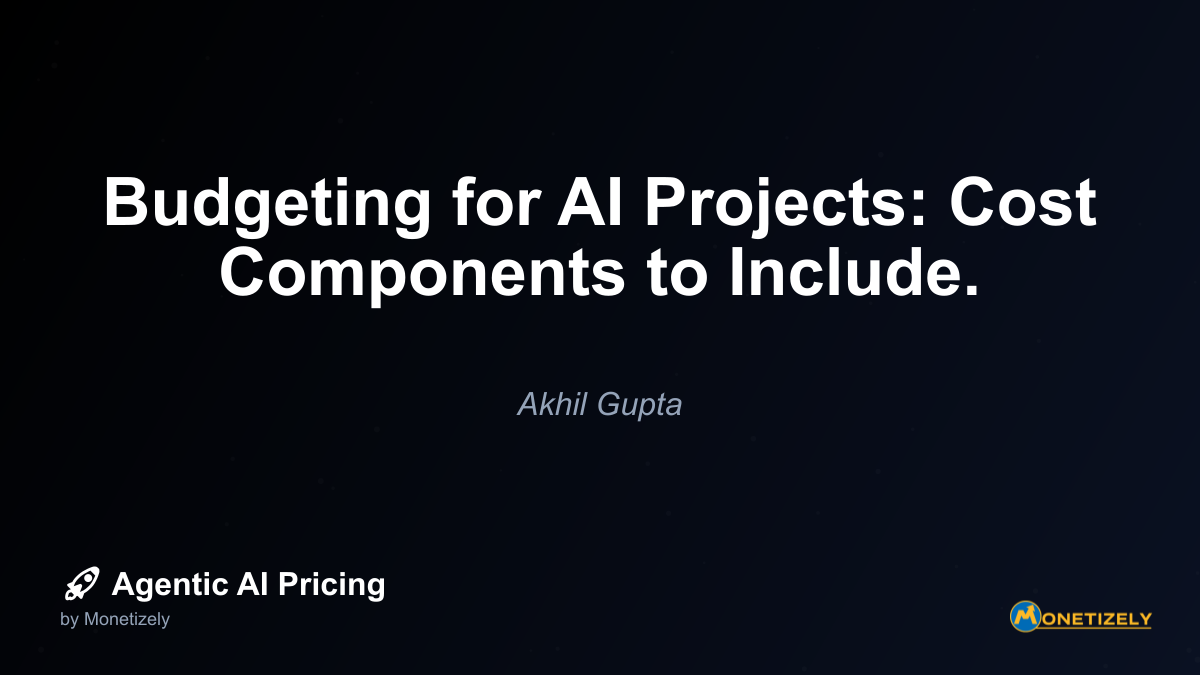· Ajit Ghuman · Implementation Strategies · 8 min read
Selecting Pilot Use Cases: Which Processes to Automate First.
AI and SaaS Pricing Masterclass
Learn the art of strategic pricing directly from industry experts. Our comprehensive course provides frameworks and methodologies for optimizing your pricing strategy in the evolving AI landscape. Earn a professional certification that can be imported directly to your LinkedIn profile.

For initial pilots, rule-based processes with clear decision parameters typically yield faster success than those requiring complex judgment. Rule-based processes follow consistent patterns and explicit criteria, making them easier to automate effectively.
Ideal rule-based processes for automation include:
- Data validation and verification
- Standard approval workflows
- Routine correspondence generation
- Information gathering and consolidation
- Basic customer service inquiries
Judgment-heavy processes that involve nuanced decision-making, emotional intelligence, or ethical considerations may be better candidates for later phases of your AI implementation journey, after you’ve established success with more straightforward use cases.
3. Pain Point Intensity and Visibility
Processes causing significant operational pain are compelling candidates for initial automation. These pain points might manifest as:
- Excessive manual effort
- Frequent errors or inconsistencies
- Bottlenecks that delay other dependent processes
- High employee frustration or turnover
- Customer experience issues
Automating highly visible pain points can demonstrate immediate value to stakeholders. When employees experience relief from tedious tasks or customers notice improved service, your AI initiative gains powerful advocates.
4. Data Availability and Quality
Agentic AI systems require sufficient high-quality data to function effectively. Evaluate potential pilot processes based on:
- Data accessibility: Is relevant data readily available?
- Data completeness: Are there significant gaps in the necessary information?
- Data quality: Is the information accurate and consistent?
- Data format: Is the data structured in a way that facilitates automation?
Processes with abundant, clean, structured data typically make better initial candidates for automation than those requiring extensive data preparation or integration work.
5. Integration Complexity
The technical complexity of integrating AI with existing systems significantly impacts implementation timelines and success rates. Consider:
- Number of systems involved
- Availability of APIs or integration points
- Legacy system constraints
- Data transfer requirements
For pilot projects, processes with minimal integration requirements or those operating within modern, API-friendly environments typically present fewer implementation challenges.
6. Regulatory and Compliance Considerations
Some processes operate under strict regulatory frameworks or involve sensitive data, potentially complicating automation efforts. While these aren’t necessarily disqualifying factors, they may introduce additional requirements:
- Enhanced security measures
- Audit trail capabilities
- Human oversight mechanisms
- Compliance documentation
For initial pilots, processes with moderate or manageable compliance requirements may offer a smoother path to implementation success.
7. Potential ROI and Value Creation
Ultimately, pilot projects should demonstrate meaningful return on investment. Evaluate potential processes based on:
- Cost reduction potential
- Revenue enhancement opportunities
- Quality improvement prospects
- Customer experience impact
- Strategic alignment with organizational priorities
Processes that deliver quantifiable value within 3-6 months make particularly compelling pilot candidates, as they help build organizational momentum for broader AI adoption.
Balancing Quick Wins vs. Strategic Impact
When selecting pilot use cases, organizations often face a tension between pursuing quick wins and targeting strategic impact. Both approaches have merit:
Quick Wins:
- Demonstrate value rapidly
- Build organizational confidence
- Generate momentum for broader adoption
- Provide valuable learning opportunities
- Typically involve simpler, contained processes
Strategic Impact:
- Address significant business challenges
- Deliver substantial ROI
- Align with long-term organizational priorities
- May involve more complex implementation
- Often require longer timeframes to realize full value
The optimal approach typically combines elements of both strategies. Consider implementing a portfolio of pilot projects that includes:
- Fast-track pilots: Simple, contained processes that can demonstrate value within 30-90 days
- Medium-complexity pilots: Processes with moderate integration requirements delivering value in 3-6 months
- Strategic initiatives: More complex implementations addressing significant business challenges with substantial ROI potential
This balanced approach maintains momentum through quick wins while building toward transformative impact.
Common Process Categories for Initial Automation
Certain categories of processes consistently prove effective as initial automation candidates across industries:
1. Document Processing and Data Extraction
Extracting information from documents, forms, emails, and unstructured text represents a common pain point in many organizations. Agentic AI excels at:
- Extracting key data from invoices, contracts, and forms
- Classifying documents by type and content
- Routing information to appropriate systems and workflows
- Validating data completeness and accuracy
- Summarizing lengthy documents
These processes typically involve high volumes, follow consistent patterns, and consume significant manual effort—making them excellent candidates for initial automation.
2. Customer Service and Support
Customer-facing processes often present compelling automation opportunities:
- Answering frequently asked questions
- Triaging and routing customer inquiries
- Providing product information and recommendations
- Processing standard service requests
- Gathering preliminary information before human handoff
Automating these interactions can simultaneously reduce costs, improve response times, and enhance customer satisfaction.
3. Administrative and Operational Tasks
Back-office functions typically include numerous repetitive, rule-based processes ideal for initial automation:
- Scheduling and calendar management
- Data entry and validation
- Report generation and distribution
- Basic approval workflows
- Inventory monitoring and reordering
These processes often consume disproportionate staff time relative to their strategic value, making them prime candidates for AI-driven efficiency improvements.
4. Financial Operations
Finance departments typically manage numerous structured, rule-based processes well-suited to automation:
- Invoice processing and validation
- Payment reconciliation
- Expense report review
- Basic financial reporting
- Budget variance analysis
These processes typically involve structured data, clear rules, and significant manual effort—creating ideal conditions for successful automation.
5. HR and Employee Services
Human resources functions include many standardized processes that can benefit from automation:
- Candidate screening and initial assessment
- Employee onboarding documentation
- Benefits enrollment and administration
- Leave request processing
- Standard HR inquiries and information requests
Automating these processes can improve employee experience while freeing HR staff to focus on more strategic activities.
Evaluating and Prioritizing Potential Use Cases
Once you’ve identified potential pilot candidates, a structured evaluation approach helps prioritize opportunities. Consider developing a scoring matrix that assesses each potential use case against key criteria:
Implementation complexity (1-5 scale)
- Technical integration requirements
- Data readiness
- Process complexity
- Regulatory considerations
Potential business impact (1-5 scale)
- Cost reduction
- Revenue enhancement
- Quality improvement
- Strategic alignment
Organizational readiness (1-5 scale)
- Stakeholder support
- Resource availability
- Change management requirements
- Technical capabilities
Time to value (1-5 scale)
- Implementation timeline
- Value realization timeframe
- Dependency on other initiatives
This evaluation framework helps identify processes offering the optimal balance of feasibility and impact. Processes scoring high on business impact and organizational readiness while scoring low on implementation complexity typically make excellent pilot candidates.
Common Pitfalls in Pilot Use Case Selection
Several common mistakes can undermine the success of initial AI implementations:
1. Automating Broken Processes
Automating a fundamentally flawed process merely produces errors more efficiently. Before implementing AI, evaluate whether the underlying process requires redesign or optimization. Applying automation to streamlined, effective processes yields significantly better results than automating inefficient ones.
2. Targeting Excessive Complexity
While ambitious goals are admirable, overly complex initial implementations risk delays, cost overruns, and stakeholder disappointment. Start with manageable scope, demonstrate success, then progressively tackle more complex challenges as organizational capabilities mature.
3. Neglecting Change Management
Even technically successful implementations can fail if affected employees resist adoption. Select initial use cases with supportive stakeholders and clear benefits for end users. Processes causing significant frustration for employees often gain enthusiastic adoption when automated effectively.
4. Overlooking Data Quality Issues
Poor data quality can severely impact automation results. Thoroughly assess data readiness before committing to specific pilot projects, and be prepared to invest in data preparation if necessary.
5. Ignoring Measurement Mechanisms
Without clear metrics and measurement approaches, it’s difficult to demonstrate the value of your automation efforts. Establish baseline measurements and define success criteria before implementation to enable meaningful ROI assessment.
Building Your Pilot Selection Roadmap
Developing a structured approach to use case selection improves the likelihood of successful implementation. Consider this step-by-step roadmap:
Step 1: Conduct a Process Inventory
Create a comprehensive inventory of potential automation candidates across your organization. For each process, capture basic information:
- Process name and description
- Process owner and key stakeholders
- Current volume and frequency
- Estimated manual effort required
- Known pain points or challenges
Step 2: Apply Initial Screening Criteria
Filter your process inventory using basic qualifying criteria:
- Is the process rule-based or judgment-heavy?
- Is the necessary data accessible and of reasonable quality?
- Does the process occur with sufficient frequency to justify automation?
- Are there significant regulatory or compliance constraints?
This initial screening helps identify processes with fundamental characteristics conducive to successful automation.
Step 3: Evaluate Business Value and Implementation Feasibility
For processes passing initial screening, conduct a deeper assessment of:
- Potential cost savings or revenue enhancement
- Quality improvement opportunities
- Customer or employee experience impact
- Implementation complexity and resource requirements
- Integration challenges and dependencies
- Data preparation needs
This evaluation helps prioritize opportunities based on the balance of potential value and implementation feasibility.
Step 4: Assess Organizational Factors
Consider organizational dynamics that may impact implementation success:
- Stakeholder support and enthusiasm
- Organizational readiness for change
- Availability of necessary technical skills
- Alignment with strategic priorities
- Potential resistance or adoption challenges
Processes with strong stakeholder support and organizational readiness typically present lower implementation risk.
Step 5: Develop a Balanced Portfolio of Pilot Projects
Rather than selecting a single pilot, consider developing a portfolio of complementary projects that balance:
- Quick wins vs. strategic impact
- Technical complexity vs. implementation simplicity
- Operational vs. customer-facing processes
- Cost reduction vs. value enhancement opportunities
This balanced approach maintains implementation momentum while building toward transformative impact.
Conclusion: Setting the Stage for Success
Selecting the right processes for your initial agentic AI implementations significantly influences your organization’s automation journey. By prioritizing high-volume, rule-based processes with clear business value and manageable implementation complexity, you establish the foundation for successful AI adoption.
Remember that pilot projects serve multiple purposes: demonstrating value, building organizational capabilities, and creating momentum for broader implementation. A thoughtfully selected portfolio of initial use cases accelerates your organization’s progress toward AI-driven operational excellence.
As you embark on your agentic AI implementation journey, maintain a balanced perspective that considers both technical feasibility and organizational dynamics. The most successful automation initiatives combine sound technical implementation with effective change management, creating solutions that deliver measurable value while gaining enthusiastic adoption from affected stakeholders.
By applying the structured evaluation approach outlined in this article, you’ll identify pilot opportunities that maximize your chances of initial success—creating the momentum and organizational support necessary for transformative AI implementation across your enterprise.
Co-Founder & CEO
Ajit is the author of Price To Scale, a top book on SaaS Pricing and is the Founder of Monetizely. Ajit has led and worked in pricing and product marketing at firms like Twilio, Narvar and Medallia. His work has been featured in Forbes and VentureBeat. Ajit regularly consults with software companies from Seed stage to post-IPO on pricing strategy. Ajit is also a highly-rated co-instructor for 'The Art of SaaS Pricing and Monetization' on Maven.
Pricing Strategy Audit
Let our experts analyze your current pricing strategy and identify opportunities for improvement. Our data-driven assessment will help you unlock untapped revenue potential and optimize your AI pricing approach.




